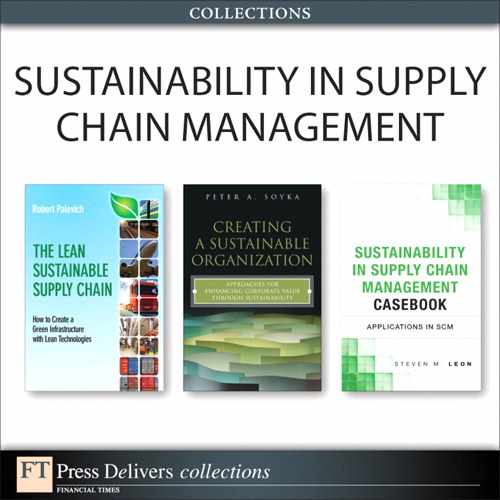Preface
This book is a summary of the experiences I have had working with many Fortune 500 companies such as GE, 3M, National Manufacturing, Sherwin-Williams, Black & Decker, Manco, and others on collaborative processes. The rationale for this collaboration was that in today’s global economy each company needed to work together to enhance corporate processes to become “Best of Breed.” It is amazing what can be learned from each company during yearly technology sessions when best technologies are shared so that every company reaps the benefits. The ideas and strategies explored in this book form a compendium of those best practices and shared technology over the past 25 years.
The inspiration for writing this book began when I won the award of first place in the case study track at the International Symposium of Supply Chain Management held at Kent State University in 2010. My specialty focused on applications that clarified the newest technologies with Lean initiatives and how those technological advances affect the Green environment. The purpose of this book is to break down the processes used in creating a world-class company so that any manager interested in cutting the fat can implement the technological advances now available.
This book will demonstrate how to calculate a scorecard for the various enterprise Lean technologies introduced and will act as a Lean Savings Report and a Green Sustainability Report including environmental savings. The Lean Savings will show the increased productivity incurred from the usage of the various technologies. The Lean metrics will show how much each of these technologies saves in these areas:
• Personnel
• Paper usage
• Increased productivity
• Lessened building space, allowing for less utility usage
• Fewer miles traveled in the transportation system
• Better service levels
• Lower inventory levels
• Better turns
• More efficient utilization of IT resources
• Better morale
The environmental Green Savings include the following:
• Less electrical usage due to the need for fewer employees
• Carbon savings as a result of the decreased electrical usage
• Smaller amounts of paperwork, translating into fewer trees cut down per year
• Lesser amounts of carbon dioxide being emitted and using fewer trees resulting from lean management styles and technology
• Fewer miles driven due to the use of the Transportation Management System lead to a reduction in the pounds of CO2 footprint in the environment.
• Less highway wear and tear as a result of fewer miles traveled
• Less space utilization, requiring less building expense and upkeep
Each technology is introduced so that the reader not only understands how to implement each improvement but can measure the successes through increased company performance as well as environmental Green Savings. The formulas are presented to calculate the annual decrease of carbon dioxide and conversion of gasoline from gallons to pounds of CO2. This is shown in the introduction of each technology. At the end of the chapters, Appendix A summarizes the savings that points out each technology’s effect on the company’s bottom line and performance. The time has come to learn to adapt to new innovations and enhance shareowners’ benefits and profitability.
